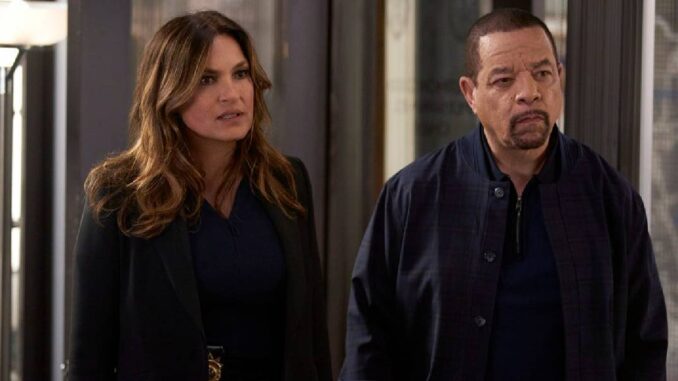
The Echo of a Siren: What the SVU/Organized Crime Crossover Illustrates
The television landscape in the 21st century is a fractured mosaic, a kaleidoscope of streaming services, niche programming, and on-demand consumption. In such an environment, the very idea of an “event” on linear television, capable of commanding a unified audience and shattering viewership records, often feels like a quaint relic of a bygone era. Yet, when Detective Elliot Stabler, after a decade-long absence, reunited with Captain Olivia Benson in the highly anticipated Law & Order: SVU and Organized Crime crossover, it did precisely that. The record-breaking ratings were not merely a triumph of scheduling or marketing; they were a profound illustration of several enduring truths about narrative power, fan loyalty, and the surprising resilience of traditional television in the digital age.
Firstly, the unprecedented success of the crossover powerfully illustrates the unparalleled potency of long-form character development and unresolved narrative tension. For twelve seasons, audiences had watched Benson and Stabler forge one of television's most iconic and complex partnerships. Their bond, a delicate alchemy of platonic love, professional respect, and unspoken yearning, was the beating heart of SVU. When Stabler abruptly departed in 2011, it left a gaping, unresolved wound in the show's narrative and, more importantly, in the collective consciousness of its dedicated fanbase. The decade-long wait for his return, fueled by fan theories, social media campaigns, and the sheer narrative weight of their shared history, built an almost unbearable anticipation. The crossover wasn't just the premiere of a new show; it was the long-awaited payoff for two decades of emotional investment, proving that a meticulously nurtured character arc, even one paused for a decade, can wield immense gravitational pull.
Secondly, the ratings explosion underscored the enduring strength and adaptability of a well-crafted television universe. Dick Wolf's Law & Order franchise has always been lauded for its procedural reliability and its "ripped from the headlines" immediacy. However, SVU distinguished itself by delving deeper into the psychological and emotional tolls of its cases on its protagonists. The crossover demonstrated that while the procedural structure provides a sturdy framework, it is the rich, interconnected tapestry of character relationships and shared history within a universe that truly resonates. The ability to launch a new series, Organized Crime, directly from the emotional fallout of a beloved established show, and to weave its pilot inextricably with the return of a legacy character, illustrates a masterful understanding of franchise potential. It’s a testament to the idea that a universe, built with consistent tone and interweaving narratives, can become more than the sum of its parts, offering endless avenues for storytelling.
Finally, this record-breaking event served as a potent illustration of the power of collective cultural experience and the appointment viewing phenomenon in the age of infinite choice. In an era where content is atomized, binged, and consumed in isolation, the SVU/Organized Crime crossover became a bona fide event. Social media erupted in a symphony of live-tweeting, reaction GIFs, and instant analysis. It wasn't merely a show; it was a shared happening, a communal sigh of relief and excitement. This phenomenon speaks to a latent human desire for shared experiences, even in our digital cocoons. It proved that despite the rise of streaming, there remains a powerful appetite for programming that compels viewers to tune in at a specific time, to participate in a larger conversation, and to feel part of a collective moment.
The record-breaking Law & Order: SVU and Organized Crime crossover was far more than just a commercial success. It was a cultural validator, illustrating that deep character investment, the strategic evolution of a rich fictional universe, and the human longing for shared, communal experiences still hold immense power in the fragmented landscape of modern television. It reminds us that even in an age of algorithms and endless options, the raw emotional pull of a story well-told, and characters deeply loved, remains the most potent currency of all. The echo of that siren, ushering Stabler back into Benson's world, reverberated across the airwaves, proving that some bonds, both on screen and off, are simply unbreakable.
